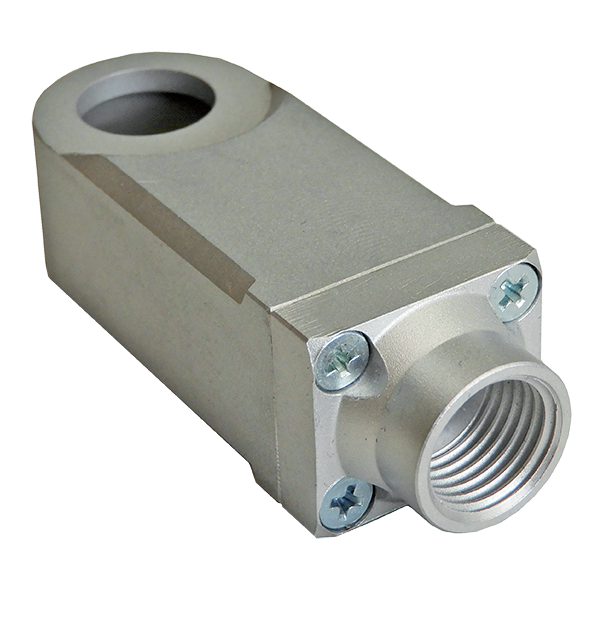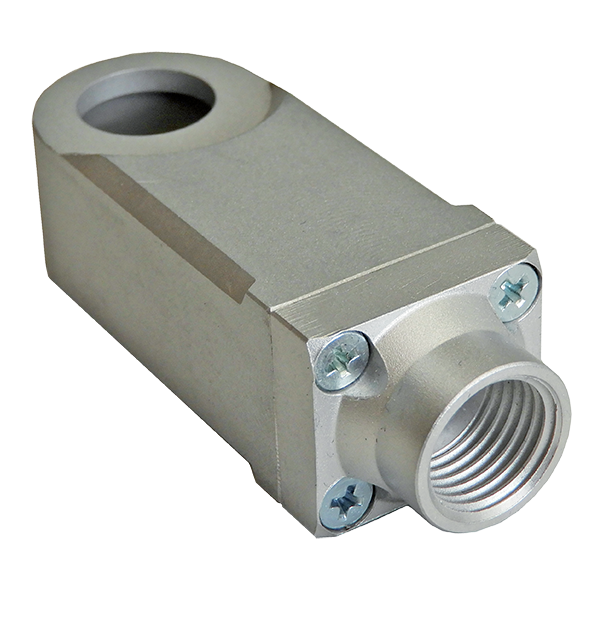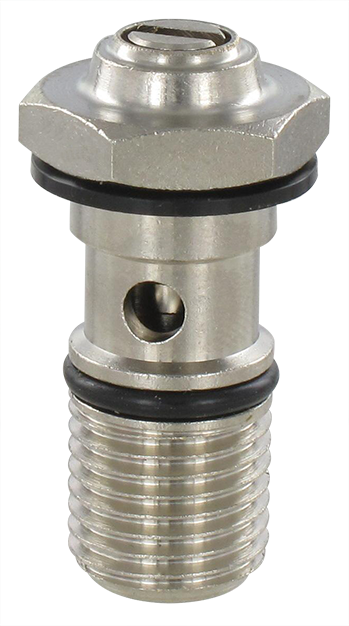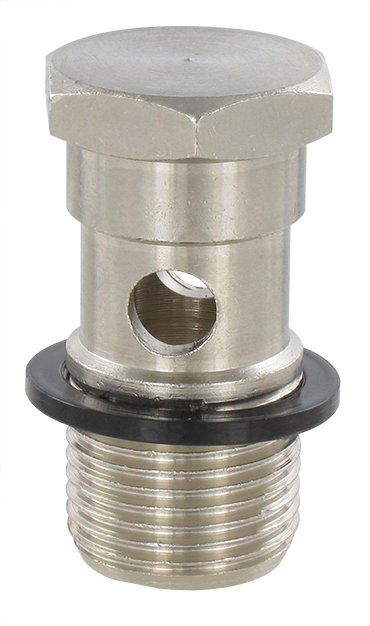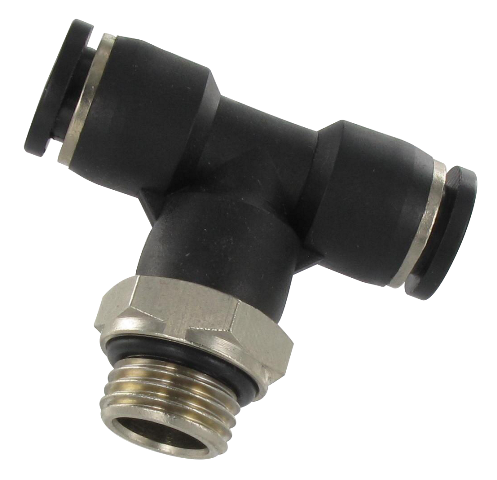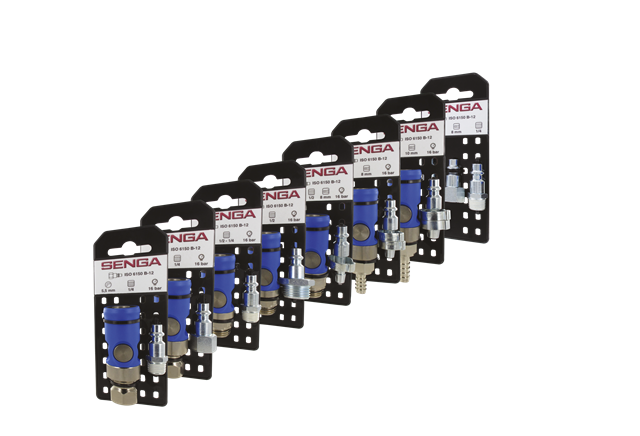VEP - Valves Eco&Power
- It is in a desire to respond to the need for ECODURABLE ENERGY SAVINGS that the design of an innovative device for pneumatic circuits was born.
Its name: the "V.E.P. - ECO&POWER VALVE". Its application will result in quantifiable savings on pneumatic equipment.> ENERGY SAVINGS: application on all 1 bar valves.
By installing the VEP, the same force is obtained on the cylinder rod as if the pressure had not been reduced (example: at 6 bar force = 301 Kg, whereas at 5 bar + VEP force = 292 Kg - see table in catalogue).
With the same initial force, energy savings (Nl of compressed air) of between 10 and 27% can be obtained, and consequently a 20% reduction in Kwh by avoiding reaching 6 bar pressure in the installation.
All this is based on the principle that the power absorbed by the compressor required to produce air is directly proportional to the value of the required working pressure.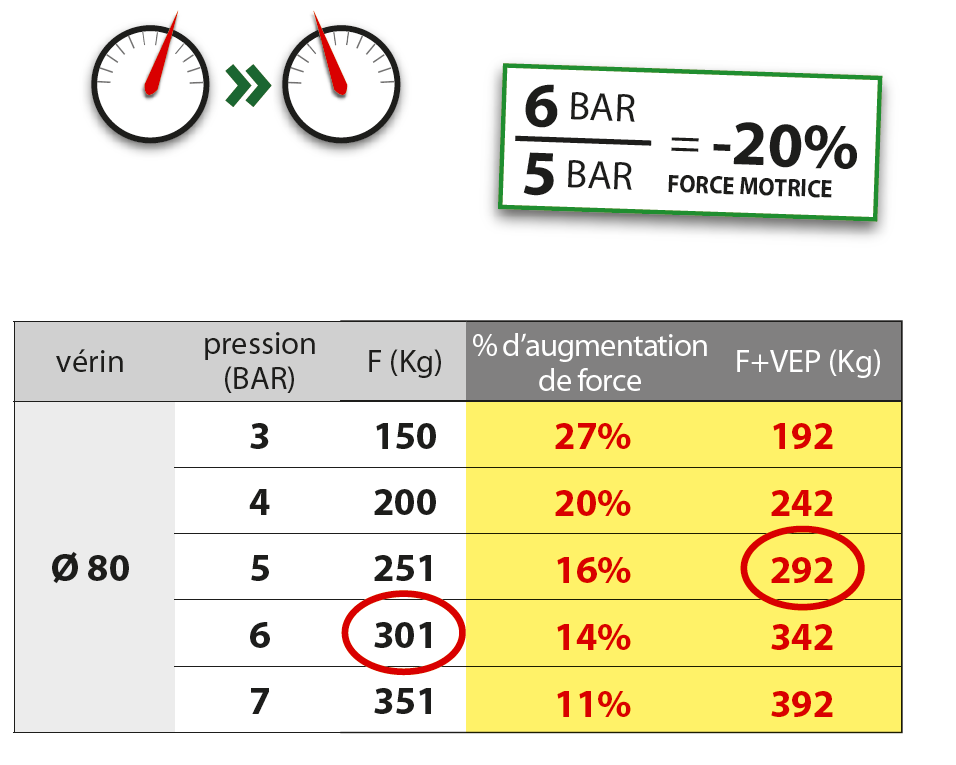

The table on the right above shows the reduction of 1 bar which results in a reduction in consumption (Nl).
(Example: by going from 6 bar to 5 bar, consumption drops from 13.52 Nl to 11.60 Nl = -14.2%).In addition, the reduction in pressure results in savings on :
- the driving energy dispersed in heat
- the use of energy for cleaning and filtering systems and a reduction in condensation for the same output
- less wear and tear on the compressor unit and therefore lower periodic maintenance costs> POWER: power multiplier, application present on all VEP articles
Without any intervention on the pressure present in the circuit, the application of the VEP device implements and valorizes the technical characteristics of output in the phase of output of the cylinder (example: at 5 bar force = 251 Kg, whereas at 5 bar + VEP, force = 292 Kg with an increase of 16 % - see table opposite).
This application is interesting :
- in cases where it is necessary to increase the force of the rod to guarantee certain levels of thrust
- where a safety margin is required if there are pressure variations in the air system
- where increased cylinder force is critical to ensure completion of an operation
- to counteract overloads due to tool actions
- to avoid the use of higher pressures or the use of expensive pressure multipliersWith the POWER application of the VEP device, force increases of between 11 and 44% can be achieved depending on the cylinder and pressure used.
The table below shows the increase in force from the standard force "F" to the force "F+VEP" (example: cylinder Ø 80, stroke 200 mm, cross-section 50 cm2).
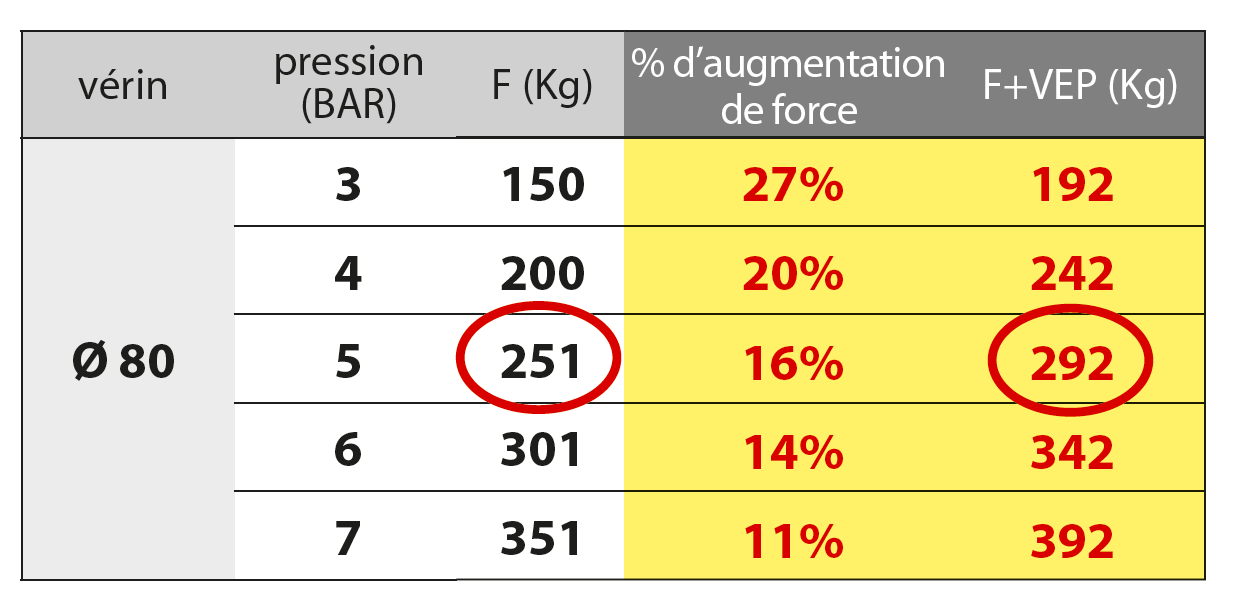
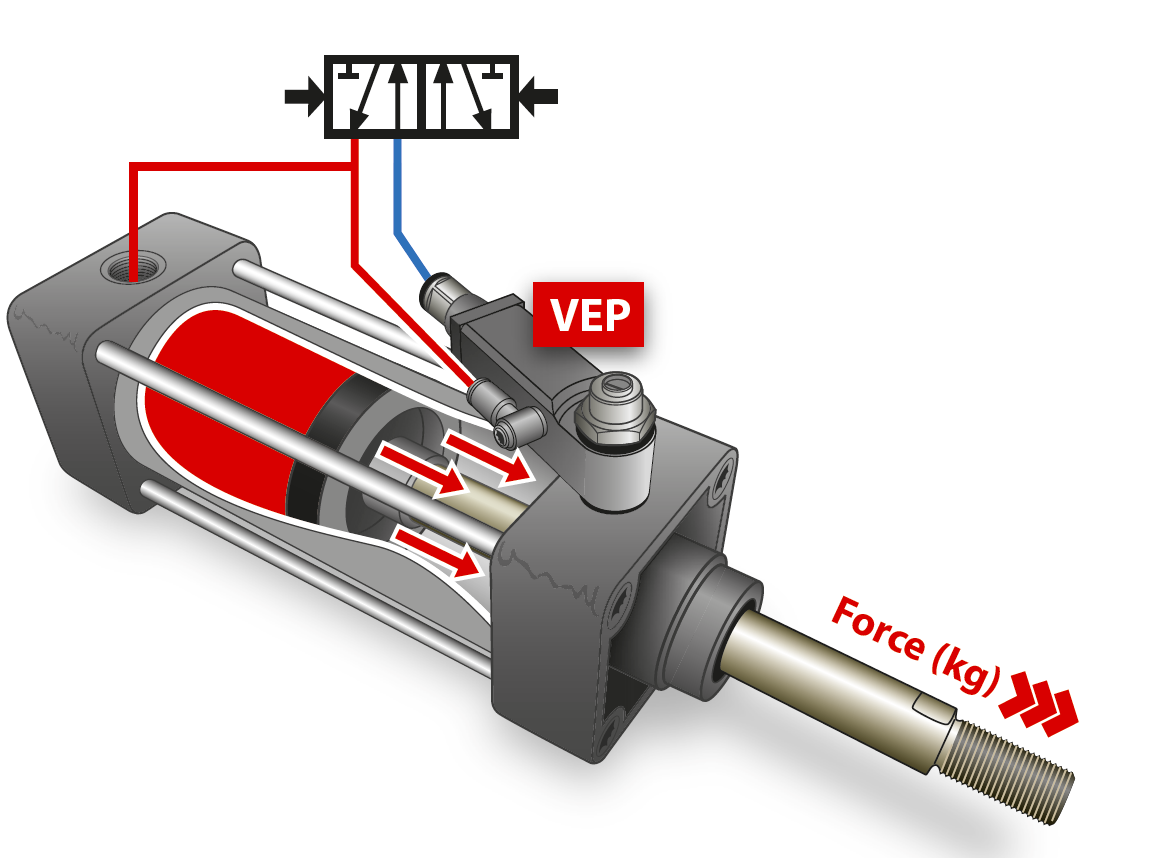
> SOFT-PRESS application: force reducer, present on all VEP articles
With the operation of the VEP valve on the cylinder only (without any other air connections) it is possible to operate the rod to obtain reduced push or pull forces (vacuum level from - 0,1 to - 0,9 bar depending on the pressure used) for use in delicate positioning operations or for two-hand controls.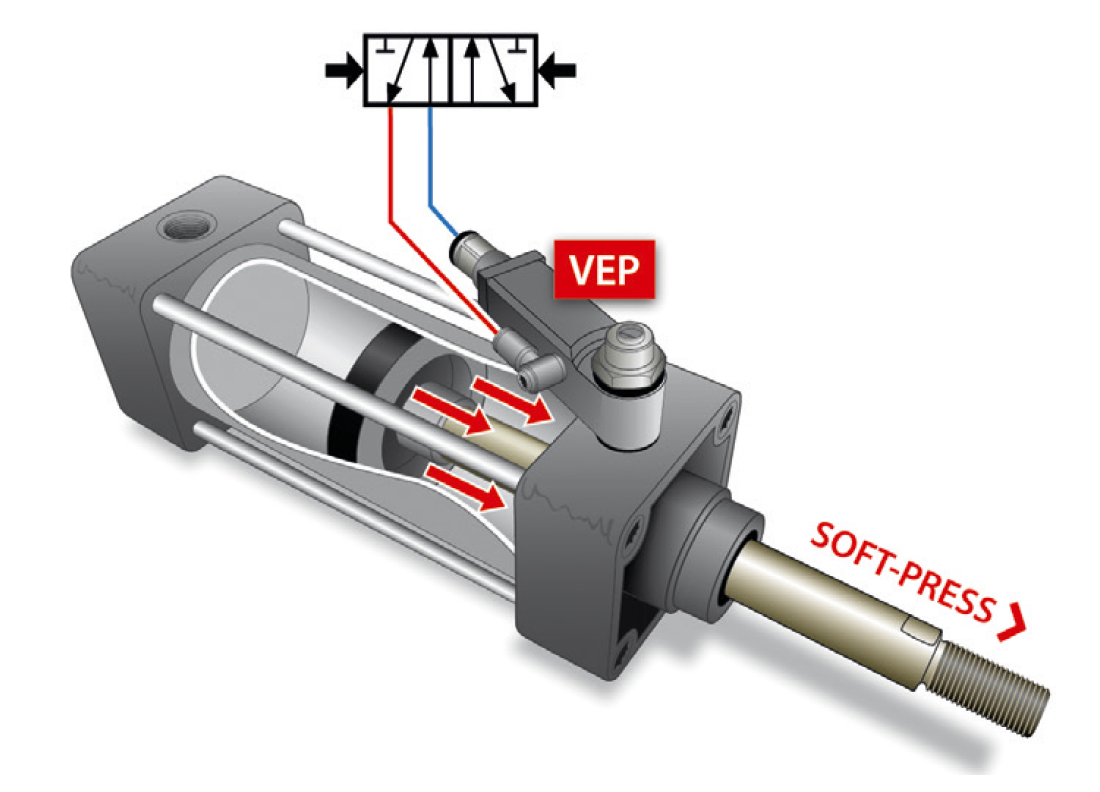
> QUICK CYLINDER ROD RETRACTATION application: faster cylinder rod return, present on all VEP - VRR articles
This version of the VEP provides for a cylinder rod extension speed as with all VEPs, but with a faster rod retraction.


